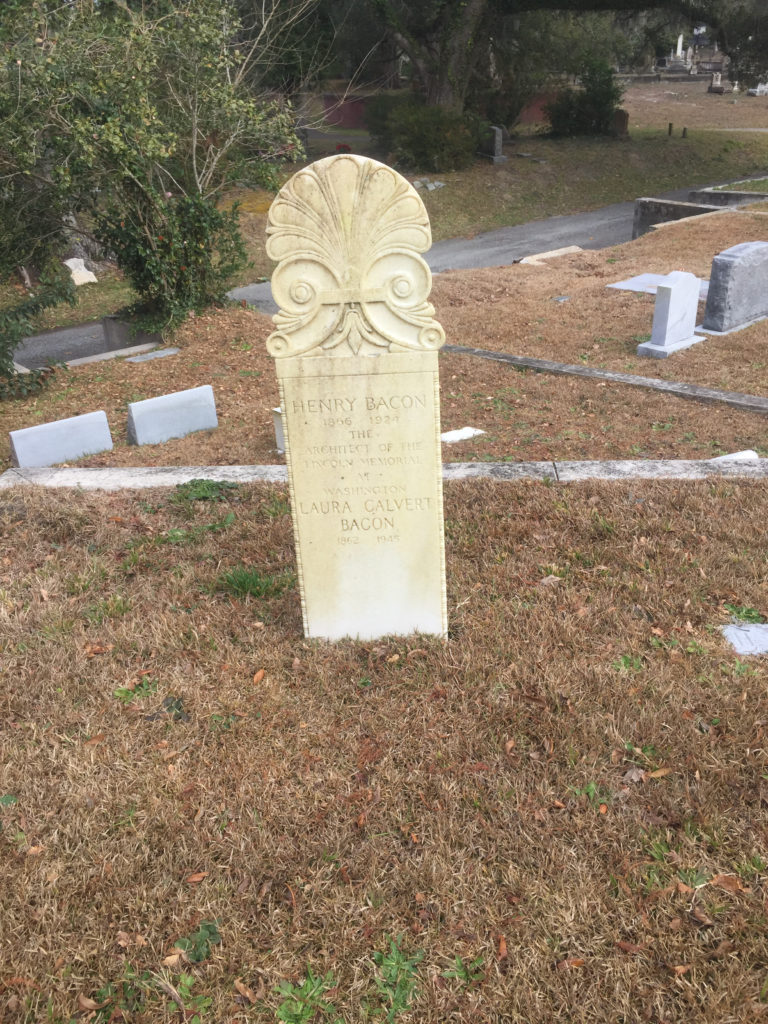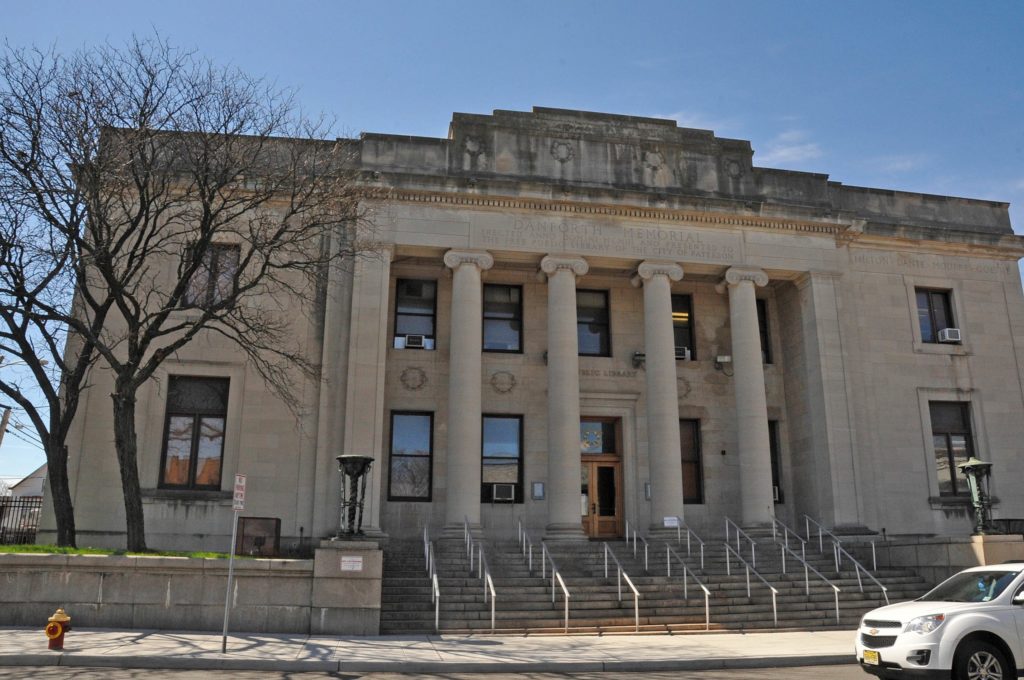Erik Visits an American Grave, Part 923
This is the grave of Henry Bacon.

Born in Watseka, Illinois in 1866, Bacon grew up well off enough to get to go to the University of Illinois, but he evidently found college boring. He really wanted to be an architect. Not sure if Illinois offered that at the time, but in any case, Bacon bailed after a year and moved to New York. He got a job with the elite firm of McKim, Mead, and White as a draftsman and he became nearly an instant star for the company, participating, even if in a minor role given his age and lack of experience, in such MMW star buildings as the Boston Public Library, Penn Station, the World’s Columbian Exposition (the world’s fair in 1893 Chicago), and the New York Herald Building.
In 1889, Bacon won a prestigious scholarship to study in Europe. So he spent the next two years traveling around, seeing the great buildings, and learning a ton. Another of the members of his class was one Albert Kahn, who would become one of the most important architects of the 20th century. Well, Bacon was no slouch himself. He came back to McKim, Mead, and White in 1891 and designed the Rhode Island State House (pretty cool, I like the building and had no idea it was a Bacon design) along with Charles McKim.
In 1897, Bacon went out on his own with James Brite. Brite Bacon would become a leading architectural firm over the next few years. Bacon was the lead designer while Brite handled the business matters. They quickly won major contracts to build the library in Jersey City and the Hall of History for American University. They also started moving into the mansion business, which was good for money if not for long-term prestige. After all, someone had to live in them. The most famous is the Le Fetra Mansion in New York, built for the founder of the company that eventually became Nabisco.
Bacon was well-known for his love of Greek design. And so, in 1897, he was approached about an idea to build a big monument to Abraham Lincoln in Washington along Greek lines. He was immediately interested. In fact, it became such an obsession for him that Brite left the firm in 1902 since Bacon wouldn’t focus on profitable business anymore. The problem with what became the Lincoln Memorial is that there was no money to build it. But Bacon remained committed. Finally, the Lincoln Memorial opened in 1922.
It’s hard to overstate just how great the Lincoln Memorial is. It’s truly the perfect monument. In an age of rising fascism, it was a memorial that actually urged the viewer to think about the man. The design is nearly perfect. Going up the iconic stairs while looking up at Lincoln is so inspiring and reading the words of Lincoln in the walls when you get to the top also always fills me with emotion. It’s rare that I feel particularly patriotic or positive about this nation, but the Lincoln Memorial does it for me every time. So thanks to Bacon for that.
Bacon was in fact still working during this period on completing projects, whatever Brite may have said. Among his leading buildings of the 1910s and early 20s are the Danforth Memorial Library in Paterson, New Jersey, the World War I Memorial at Yale, the train station for Naugatuck, Connecticut, and, sadly, the Confederate memorial in Wilmington, North Carolina. Sigh, even the designer of the Lincoln Memorial was not immune from the pro-Confederate reconcilationism of the time period. It’s also worth noting that Bacon had a lot of projects in Wilmington because this was the ancestral home of his family. But that’s no excuse for monuments to honor people who committed treason in defense of slavery.
Bacon started working with Augustus Saint-Gaudens as well, including collaboration on the Mark Hanna Memorial in Cleveland. He did not design the statue of Lincoln inside the memorial but certainly collaborated with the sculptor Daniel Chester French on the design. He designed the Olin Library at Wesleyan University, which is where his papers reside today.
By the early 20s, Bacon was a huge architectural star. He became an associated member of the National Academy of Design in 1913 and a full member in 1917. Warren Harding presented him with the American Institute of Architects Gold Medal in 1923. But this was the end of Bacon’s career because he was dying of cancer. That killed him in 1924. He was 55 years old.
Let’s look at a few of Bacon’s buildings.




Henry Bacon is buried in Oakdale Cemetery, Wilmington, North Carolina.
If you would like this series to visit other architects, you can donate to cover the required expenses here. Frank Lloyd Wright is in Scottsdale, Arizona and Gordon Bunshaft is in Cheektowaga, New York. Previous posts in this series are archived here.
